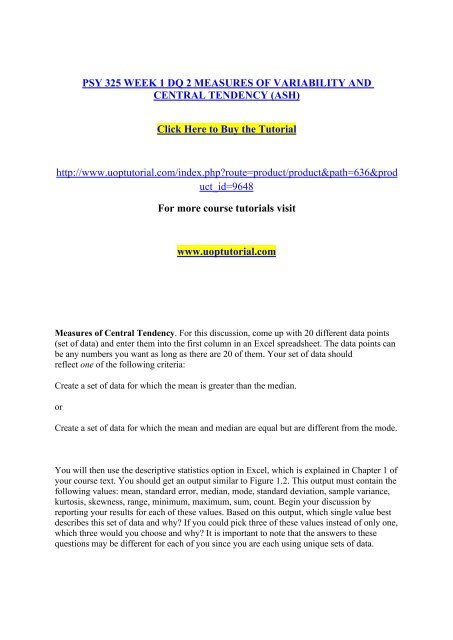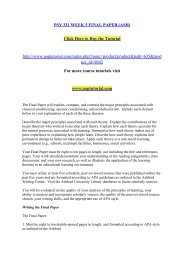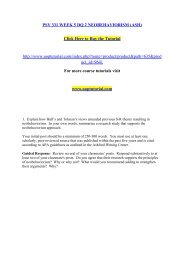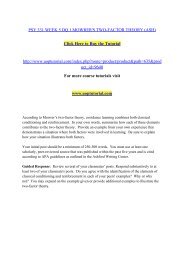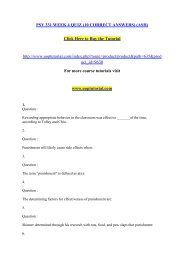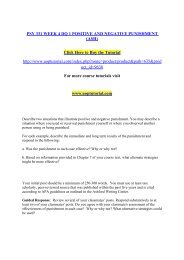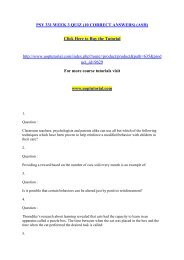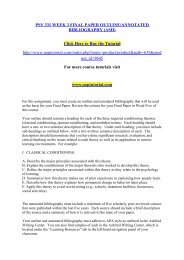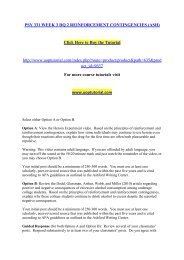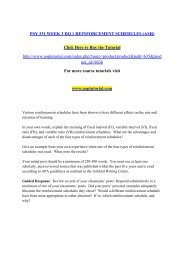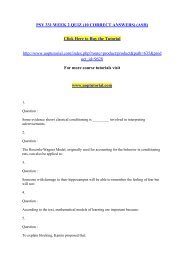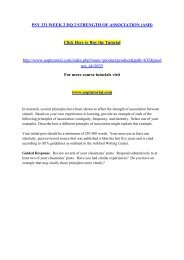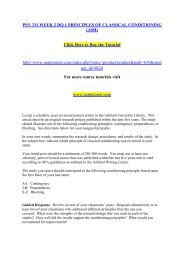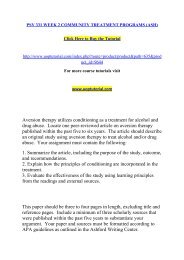PSY 325 WEEK 1 DQ 2 MEASURES OF VARIABILITY AND CENTRAL TENDENCY/ Uoptutorial
For more course tutorials visit www.uoptutorial.com Measures of Central Tendency. For this discussion, come up with 20 different data points (set of data) and enter them into the first column in an Excel spreadsheet. The data points can be any numbers you want as long as there are 20 of them. Your set of data should reflect one of the following criteria: Create a set of data for which the mean is greater than the median. or Create a set of data for which the mean and median are equal but are different from the mode. You will then use the descriptive statistics option in Excel, which is explained in Chapter 1 of your course text. You should get an output similar to Figure 1.2. This output must contain the following values: mean, standard error, median, mode, standard deviation, sample variance, kurtosis, skewness, range, minimum, maximum, sum, count. Begin your discussion by reporting your results for each of these values. Based on this output, which single value best describes this set of data and why? If you could pick three of these values instead of only one, which three would you choose and why? It is important to note that the answers to these questions may be different for each of you since you are each using unique sets of data.
For more course tutorials visit
www.uoptutorial.com
Measures of Central Tendency. For this discussion, come up with 20 different data points (set of data) and enter them into the first column in an Excel spreadsheet. The data points can be any numbers you want as long as there are 20 of them. Your set of data should reflect one of the following criteria:
Create a set of data for which the mean is greater than the median.
or
Create a set of data for which the mean and median are equal but are different from the mode.
You will then use the descriptive statistics option in Excel, which is explained in Chapter 1 of your course text. You should get an output similar to Figure 1.2. This output must contain the following values: mean, standard error, median, mode, standard deviation, sample variance, kurtosis, skewness, range, minimum, maximum, sum, count. Begin your discussion by reporting your results for each of these values. Based on this output, which single value best describes this set of data and why? If you could pick three of these values instead of only one, which three would you choose and why? It is important to note that the answers to these questions may be different for each of you since you are each using unique sets of data.
- No tags were found...
Create successful ePaper yourself
Turn your PDF publications into a flip-book with our unique Google optimized e-Paper software.
<strong>PSY</strong> <strong>325</strong> <strong>WEEK</strong> 1 <strong>DQ</strong> 2 <strong>MEASURES</strong> <strong>OF</strong> <strong>VARIABILITY</strong> <strong>AND</strong><br />
<strong>CENTRAL</strong> <strong>TENDENCY</strong> (ASH)<br />
Click Here to Buy the Tutorial<br />
http://www.uoptutorial.com/index.php?route=product/product&path=636&prod<br />
uct_id=9648<br />
For more course tutorials visit<br />
www.uoptutorial.com<br />
Measures of Central Tendency. For this discussion, come up with 20 different data points<br />
(set of data) and enter them into the first column in an Excel spreadsheet. The data points can<br />
be any numbers you want as long as there are 20 of them. Your set of data should<br />
reflect one of the following criteria:<br />
Create a set of data for which the mean is greater than the median.<br />
or<br />
Create a set of data for which the mean and median are equal but are different from the mode.<br />
You will then use the descriptive statistics option in Excel, which is explained in Chapter 1 of<br />
your course text. You should get an output similar to Figure 1.2. This output must contain the<br />
following values: mean, standard error, median, mode, standard deviation, sample variance,<br />
kurtosis, skewness, range, minimum, maximum, sum, count. Begin your discussion by<br />
reporting your results for each of these values. Based on this output, which single value best<br />
describes this set of data and why? If you could pick three of these values instead of only one,<br />
which three would you choose and why? It is important to note that the answers to these<br />
questions may be different for each of you since you are each using unique sets of data.


